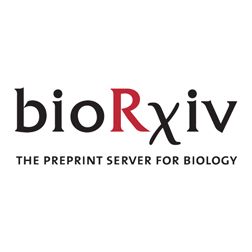
Out now:
Structure of an archaeal ribosome reveals a divergent active site and hibernation factor
@jhdcate.bsky.social @banfieldlab.bsky.social @diptinayak.bsky.social & co
#microsky
www.nature.com/articles/s41...
@xabivc.bsky.social
Nearly-dry wet-lab microbiologist 😅 Biologist, (env.) microbiologist, bioinformatician. First gen.

Out now:
Structure of an archaeal ribosome reveals a divergent active site and hibernation factor
@jhdcate.bsky.social @banfieldlab.bsky.social @diptinayak.bsky.social & co
#microsky
www.nature.com/articles/s41...

ISME Communications is expanding its scope to include Taxonomy and Nomenclature, recognizing their essential role in microbial ecology.
Read more: isme-microbes.org/taxonomy-and...
#microbes #taxonomy
Metal speciation and bioavailability in microbial growth media www.biorxiv.org/content/10.1... #jcampubs
07.10.2025 16:10 — 👍 2 🔁 1 💬 0 📌 0
New preprint: ML tree inference tools such as IQ-Tree and RAxML-NG do typically not overfit the data during tree searches: www.biorxiv.org/content/10.1...
08.10.2025 16:03 — 👍 6 🔁 1 💬 0 📌 0
Our preprint on our new metagenomic HiFi assembler Alice is out 🥳 Based on a *new sketching method* (🧵1/6)
👉 Preprint www.biorxiv.org/content/10.1...
👉 Github github.com/rolandfaure/...
DFAST (sorta PGAP fromthe DDBJ)
Not overly complicated to add custom annotation sources (blastn, blastp, rps-blast, hmm-based...)

Welcome to the social media account of the International Microbiology Literacy Initiative (IMiLI). Nearly 1,000 researchers freely contribute to the IMiLI project integrating microbiology into education providing downloadable resources for all. Explore at imili.org
23.09.2025 18:45 — 👍 11 🔁 12 💬 1 📌 4



Apple is entering the protein folding arena.
SimpleFold: Folding Proteins is Simpler than You Think arxiv.org/abs/2509.18480 🧬🖥️🧪 github.com/apple/ml-sim...
Interested in removing particle-associated microbes from particles for eg flow cytometry, culturing, or other single-cell microbiology purposes? Led by graduating PhD stdnt Jordan Coelho:
Detergent-based separation of microbes from marine particles journals.asm.org/doi/10.1128/... #jcampubs 🌊

Check out MicroMates: Oceanic Odyssey by Minkor AB on @kickstarter.com www.kickstarter.com/projects/170...
25.09.2025 22:19 — 👍 4 🔁 1 💬 0 📌 0Have you ever looked at some differentially occurring gene clusters in a microbial #pangenome and thought to yourself "I wonder if they contribute to any metabolic modules"?
With the most recent changes, the answer is a few clicks away in #anvio 😇
We can't have innovation if we block out those with new ideas or who challenge old ones. Reviewers can challenge without being assholes, and we need to acknowledge such behaviors exist and need to be expunged. 🧪
18.09.2025 15:21 — 👍 11 🔁 7 💬 0 📌 0
Vietnam reveals a hidden treasure: 12 new species of acid-loving fungi and the rediscovery of Acontium velatum 🍄. Out of the 100 samples studied, most thrive at pH <1, heat & organic solvents —showing big biotech potential. Read the full study👉
17.09.2025 09:01 — 👍 3 🔁 1 💬 0 📌 0
EcoFoldDB: Protein Structure-Guided Functional Profiling of Ecologically Relevant Microbial Traits at the Metagenome Scale enviromicro-journals.onlinelibrary.wiley.com/doi/10.1111/...
17.09.2025 13:22 — 👍 9 🔁 3 💬 1 📌 0
"We show that, despite this compression factor, SSEs can be used as a highly effective tertiary structure comparison tool, with accuracy that approaches that of Foldseek, while offering a 200-fold speedup. "
www.biorxiv.org/content/10.1...

Naiavirus: an enveloped giant virus with a pleomorphic, flexible tail
nature.com/articles/s41467-025-63463-6
agtools: a software framework to manipulate assembly graphs https://www.biorxiv.org/content/10.1101/2025.09.14.676178v1
16.09.2025 20:48 — 👍 9 🔁 10 💬 0 📌 0X-Mapper 🦠🧬🧪 - a sequence aligner developed for microbes, now on Bioconda! 🚀
• 11–24× fewer suboptimal alignments (same for human genome)
• 3–579× lower inconsistency
• improves on ~30% of reads aligned to non-target species
github.com/mathjeff/map...
bioconda.github.io/recipes/x-ma...
#microsky

A review on microbial-biofilm mediated mechanisms in marine microplastics degradation link.springer.com/article/10.1... #jcampubs
15.09.2025 14:06 — 👍 2 🔁 1 💬 0 📌 0Aquatic fungal diversity assessment through metagenomics is still limited to current databases aslopubs.onlinelibrary.wiley.com/doi/10.1002/... #jcampubs
15.09.2025 15:40 — 👍 5 🔁 3 💬 0 📌 0Why Do Filamentous Actinomycetota Produce Such a Vast Array of Specialized Metabolites? www.annualreviews.org/content/jour... #jcampubs
15.09.2025 15:41 — 👍 4 🔁 2 💬 0 📌 0
A deep-sea hydrothermal vent worm detoxifies arsenic and sulfur by intracellular biomineralization of orpiment (As2S3)
#microbiology #DeepSea
@plosbiology.org
journals.plos.org/plosbiology/...

Check out our new paper: a review of translational coupling, the phenomenon where translation of one prokaryotic gene can promote translation of the gene downstream. We cover the history, and delve into the mechanism, which is still not fully understood. journals.asm.org/doi/10.1128/...
11.09.2025 16:45 — 👍 24 🔁 14 💬 0 📌 0
“Launching the IUCN Microbial Conservation Specialist Group as a global safeguard for microbial biodiversity”- paper published and group assembled!
I'm delighted to announce the publication of "Launching the IUCN Microbial Conservation Specialist Group as a global safeguard for microbial…

Looking for a new approach to studying or eliminating phages? Check out our study introducing anti-phage ASOs (antisense oligos) out in @Nature today. nature.com/articles/s4158…
10.09.2025 15:40 — 👍 129 🔁 63 💬 4 📌 2
Atomic resolution structures of the methane-activating enzyme in anaerobic methanotrophy reveal extensive post-translational modifications
#microbiology #methane #archaea
@natcomms.nature.com
www.nature.com/articles/s41...
Phage defence-system abundances vary across environments and increase with viral density royalsocietypublishing.org/doi/full/10.... #jcampubs
08.09.2025 16:00 — 👍 0 🔁 1 💬 0 📌 0
Dissecting microbial communities with single-cell transcriptome analysis www.science.org/doi/abs/10.1... #jcampubs
08.09.2025 16:03 — 👍 24 🔁 16 💬 0 📌 0
www.biorxiv.org/content/10.1...
#phagesky #phage
Why do bacteria accumulate antiphage defence systems? royalsocietypublishing.org/doi/abs/10.1... #jcampubs
08.09.2025 16:01 — 👍 9 🔁 3 💬 0 📌 0